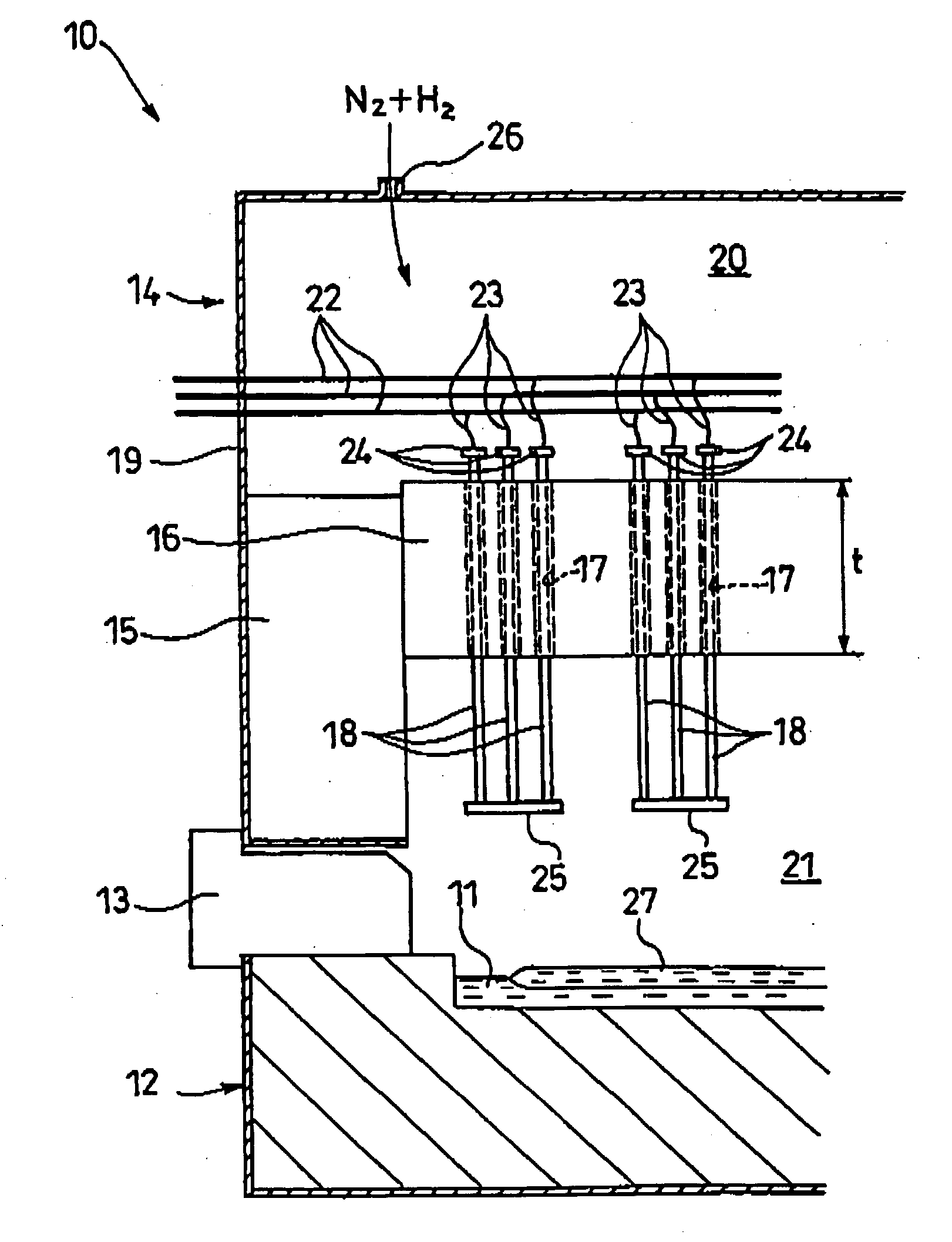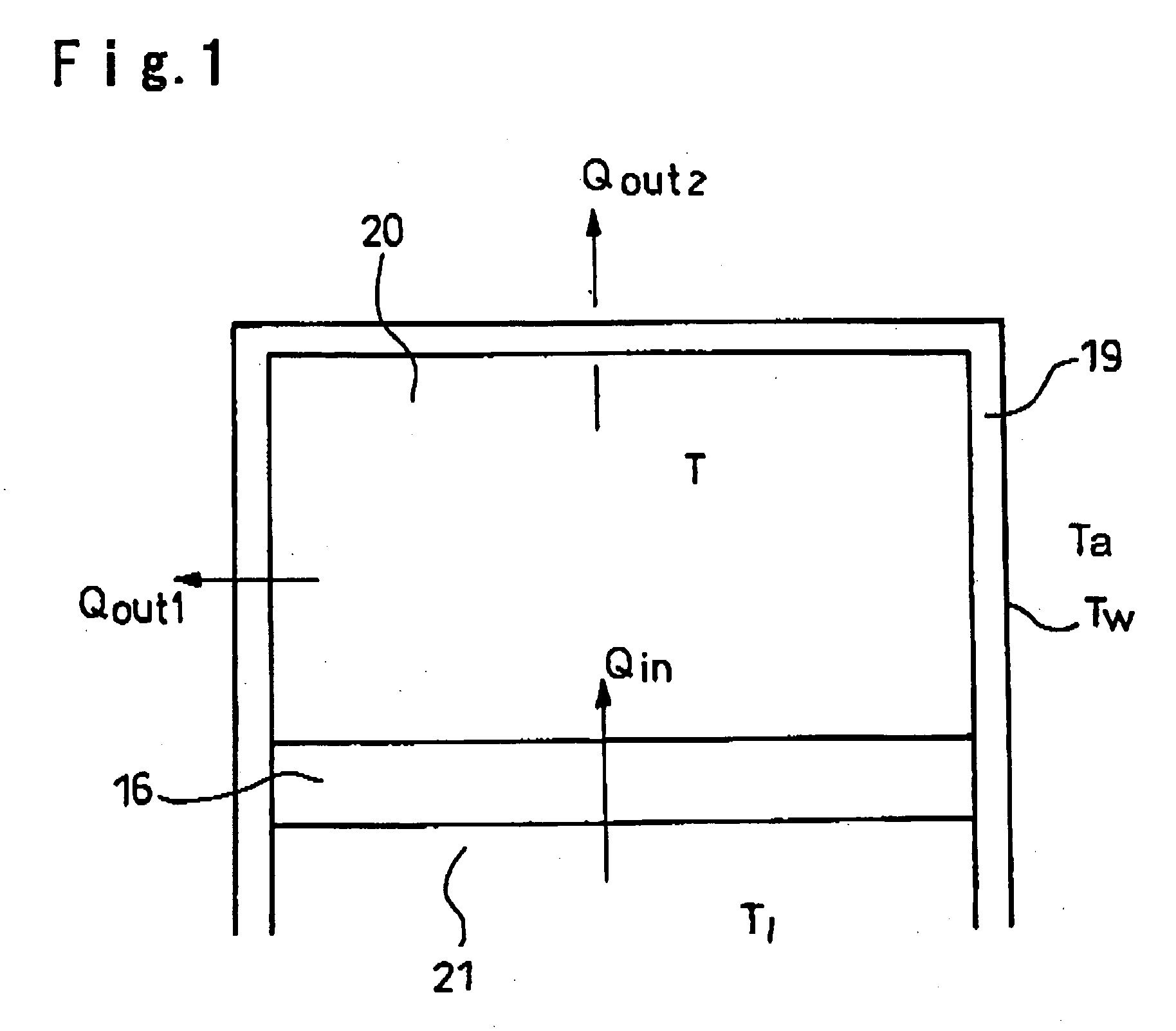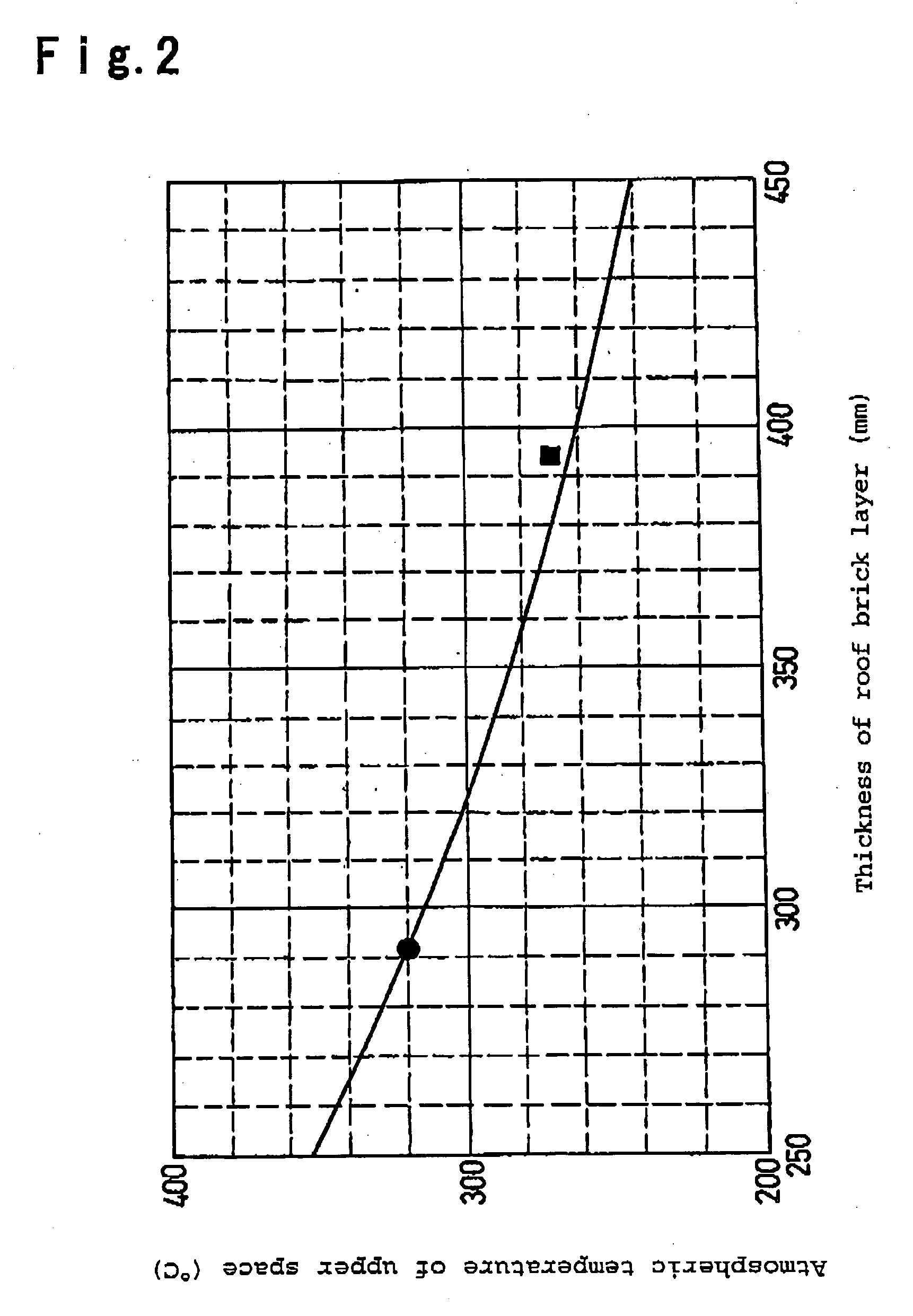Float bath and float forming method
- Summary
- Abstract
- Description
- Claims
- Application Information
AI Technical Summary
Benefits of technology
Problems solved by technology
Method used
Image
Examples
example
[0088] AN100 is float-formed by employing a float bath (thickness t of roof brick layer: 394 mm; a gap gAV between an inner face of a hole of roof brick layer and a heater inserted in the hole, that is averaged in a circumferential direction: 9 mm) of the present invention.
[0089] When the volume flow rate Vg of the atmospheric gas is set to be 95% of Vg by which T became 320° C. at a time of float forming AN100 in the float bath (t: 292 mm, gAV; 9 mm) employed for float-forming the above AN635, T became 270° C. (black square in FIG. 2). Since Vg is reduced, generation of top speck was suppressed and no significant reduction of equipment lifetime due to strap damage, was observed.
PUM
| Property | Measurement | Unit |
|---|---|---|
| Temperature | aaaaa | aaaaa |
| Thickness | aaaaa | aaaaa |
| Diameter | aaaaa | aaaaa |
Abstract
Description
Claims
Application Information
 Login to View More
Login to View More - R&D
- Intellectual Property
- Life Sciences
- Materials
- Tech Scout
- Unparalleled Data Quality
- Higher Quality Content
- 60% Fewer Hallucinations
Browse by: Latest US Patents, China's latest patents, Technical Efficacy Thesaurus, Application Domain, Technology Topic, Popular Technical Reports.
© 2025 PatSnap. All rights reserved.Legal|Privacy policy|Modern Slavery Act Transparency Statement|Sitemap|About US| Contact US: help@patsnap.com



